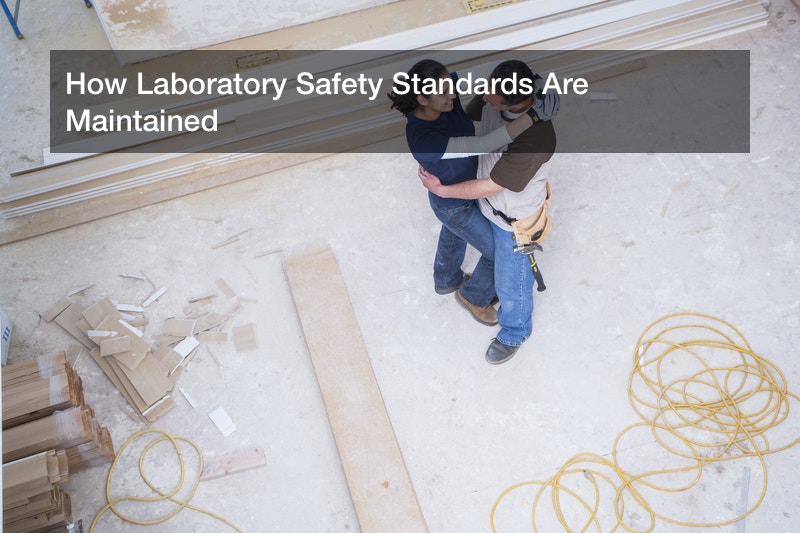Disclaimer: 4 Star Digital. This site provides business content for informational purposes only.
Hospitals may top the list of organizations doing business with medical hazardous waste disposal services, but research laboratories need these vendors, too. From academic labs to pharmaceutical research companies, organizations that create biohazard trash need a qualified company to pick it up and dispose of it in accordance with Occupational Safety and Health Administration (OSHA) regulations.
A lot goes into creating and maintaining best practices for a laboratory. The lab manager or director writes procedures based on OSHA regulations, obtains the supplies to handle the hazardous waste generated in the lab, such as medical waste bins, and contracts with the waste disposal company that picks up the secured medical waste and properly disposes of it.
Besides how a lab handles its biohazard garbage, OSHA regulations guide:
– How a lab trains its staff on safety
– Personal protective equipment (PPE) worn by staff
– Signage requirements in the work areas
– Limiting access to dangerous areas.
OSHA requires annual compliance reports on some topics and monthly compliance reports on others. While it provides the forms for a company to submit, you’ll need to include proof of proper disposal. Most hazardous waste disposal companies provide a receipt of pickup and documentation of disposal. Include these documents with your lab’s compliance forms.
Science plays a critical role in modern industry, and a few examples include the pharmaceutical sector, food and drug safety, and much more. Of course, any modern laboratory that works with radioactive materials, powerful chemicals, drugs, and dangerous pathogens must maintain proper safety standards, such as general manufacturing processes (GMP). That includes proper GMP storage conditions, GMP quality control, and even handling radiolabeled compounds with great care. A lot can go wrong in GLP testing laboratories and GMP-based storage spaces, so it is typical for the staff there to be well trained and follow safety procedure. It also helps to take careful inventory at regular intervals, and to be ready to diagnose any problem that occurs. What can be expected at GLP testing laboratories? And what does GLP even stand for?
Modern GLP Testing Laboratories
“GLP” stands for “good laboratory practice,” and this concept goes back to the 1970s. Such standards call for organization of personnel and materials, having a quality assurance program in place, being able to reliably report results of any tests performed there, taking inventory of everything found in the lab, and storing reports so that they can be retrieved with ease. In short, modern GLP testing laboratories are safe, operate smoothly and consistently, and keep track of all activity there. This makes it much easier for any operating GLP testing laboratories to undergo meaningful inspections (and labs are sure to be inspected sometimes). If there are proper records kept on site, then the visiting inspectors can review those records to get a complete picture of all operations there, such as at a pharmaceutical drug lab, for example. And, of course, all equipment and sample materials should be properly labeled for their identity, along with any warning labels.
This also includes the idea of GMP, or “good manufacturing processes,” as it is critical that pharmaceutical products are produced effectively. For example, what about the clean rooms where tests are conducted in the research lab? Clean rooms have precise standards about their air quality, from particles to humidity, and modern technology makes it much easier to measure and control air quality in there. For reference, a typical outdoor urban area has 35 million particles per cubic meter, each sized 0.5 micrometers or wider in diameter. In an ISO 1 clean room, by contrast, there may only be up to 12 particles per cubic meter, and each particle present must have a diameter of 0.3 micrometers or lower. With modern electronic sensing devices, the staff at GLP testing laboratories can maintain the particle density and the humidity within just 1%, to protect those strict standards.
American Labs Today
How big is the American pharmaceutical sector, and how well are these standards maintained in practice? The United States is the world’s leading producer of chemicals, especially pharmaceuticals, and this sector employs some 810,000 people in the nation. These GMP and GLP standards can be found everywhere, and observing them can reduce the risk of disease outbreaks or accidents or injuries. Still, problems may arise sometimes. Back in 2012, a fungal meningitis outbreak occurred in a pharmacy in the Northeast. A total of 48 people lost their lives in this accident until it was contained and the drug was recalled, and investigators found that the staff had been making procedural shortcuts and neglecting to clean and maintain the facilities.
During an inspection, visiting experts will check to ensure that all hardware, including fume hoods, are in good working order, and determine if they need to be replaced. In general, a lab fume hood should be checked yearly by an independent certifier, and ensure it has the right airflow to match Cal/OSHA standards. Not all lab hoods are measuring up; a recent survey showed that around 20% of all labs needed to replace their fume hoods during an inspection, and 33% of those lab hoods needed to be replaced simply due to their age.
Related:
best lab practices, glp certification for individuals, glp certification for laboratories, glp standards, glp toxicology studies fda, glp training online free, good laboratory practice pdf, non glp study, 40 cfr part 160, al hindi laboratories, controlling the glp inspection process, glp and sop, glp compliance statement example, glp experience, glp facility audit checklist, glp format, glp gmp environment, glp guidelines in pharma, glp guidelines slideshare, glp lab certification, glp laboratory audit checklist.
